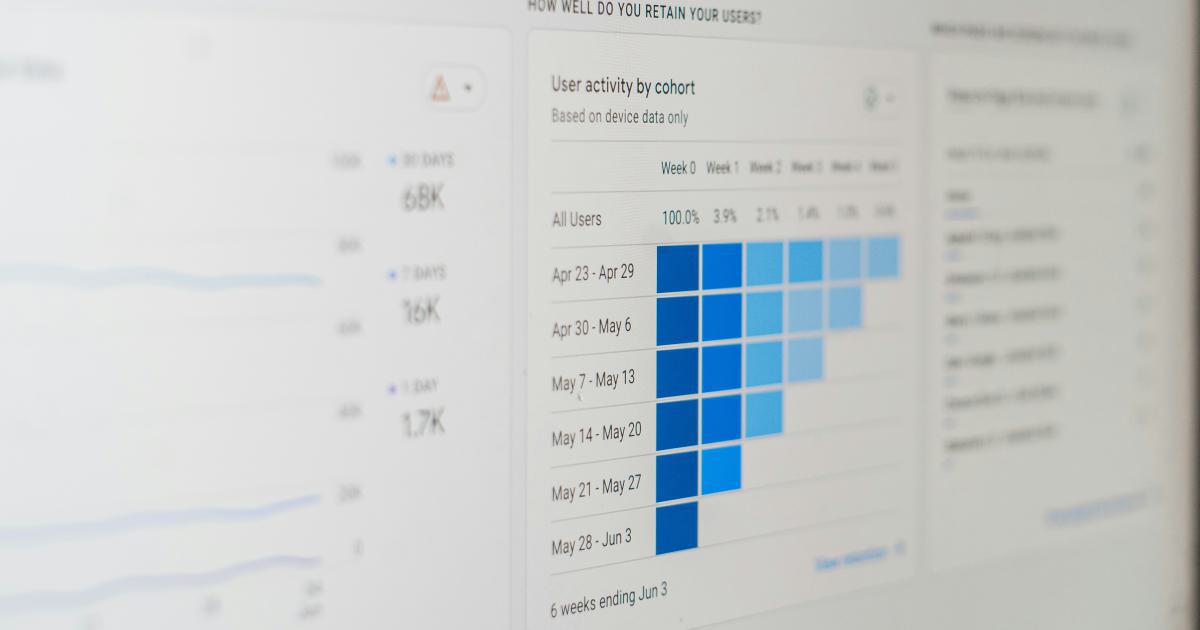5 Surefire Steps to Master Ecommerce Tracking Metrics


In the ever-evolving world of ecommerce, understanding and mastering the art of tracking metrics is crucial for businesses to make informed decisions, optimize their strategies, and ultimately drive growth. From website analytics to customer behavior insights, the wealth of data available can be overwhelming, but leveraging it effectively can be a game-changer.
In this comprehensive article, we'll explore five surefire steps that will help you navigate the complexities of ecommerce tracking metrics and unlock the full potential of your online business.
Step 1: Identify Your Key Ecommerce Tracking Metrics
The first step in mastering ecommerce tracking metrics is to identify the key metrics that are most relevant to your business. While there are countless metrics to consider, focusing on the ones that align with your specific goals and objectives is essential.
Defining Your Business Goals
Before delving into the metrics, it's crucial to clearly define your business goals. Are you aiming to increase website traffic, boost conversion rates, or improve customer retention? Understanding your overarching objectives will help you pinpoint the metrics that will provide the most valuable insights.

Tracking the Essentials
Once you have a clear understanding of your business goals, it's time to identify the essential ecommerce tracking metrics that will help you measure your progress. Some of the most commonly used metrics include:
Website Traffic: Tracking the number of visitors to your website, their sources, and their behavior can provide valuable insights into your marketing efforts and overall audience engagement.
Conversion Rate: Monitoring the percentage of visitors who take a desired action, such as making a purchase or signing up for a newsletter, can reveal the effectiveness of your website's user experience and sales funnel.
Average Order Value (AOV): Tracking the average monetary value of each transaction can help you understand your customers' purchasing patterns and identify opportunities for upselling or cross-selling.
Customer Lifetime Value (CLV): Calculating the total revenue a customer is expected to generate over the course of their relationship with your business can inform your customer acquisition and retention strategies.
Bounce Rate: Analyzing the percentage of visitors who leave your website after viewing only one page can highlight areas for improvement in your website's content and navigation.
By focusing on these core metrics, you'll be well on your way to gaining a comprehensive understanding of your ecommerce performance.
Step 2: Implement Robust Tracking Systems
Once you've identified the key ecommerce tracking metrics, the next step is to implement robust tracking systems that will capture and analyze the necessary data. This involves integrating various tools and platforms to ensure comprehensive data collection and reporting.
Leveraging Analytics Platforms
The foundation of your ecommerce tracking system will be a reliable analytics platform, such as Google Analytics or Adobe Analytics. These tools provide a wealth of data and insights into your website's performance, user behavior, and marketing effectiveness.

Integrating Ecommerce Platforms
To ensure accurate tracking of your sales and customer data, it's essential to integrate your ecommerce platform (e.g., Shopify, WooCommerce, or Magento) with your analytics tools. This integration will allow you to track metrics like conversion rates, average order value, and customer lifetime value.
Employing Specialized Tracking Tools
In addition to your primary analytics platform, consider incorporating specialized tools that can provide deeper insights into specific aspects of your ecommerce business. These may include:
Heat Mapping Tools: Tools like Hotjar or CrazyEgg can help you visualize user behavior on your website, identifying areas of high and low engagement.
Session Recording Tools: Solutions like FullStory or Inspectlet allow you to record and replay user sessions, providing valuable qualitative insights into the customer experience.
Funnel Optimization Tools: Tools like Optimizely or VWO can help you A/B test different elements of your website and sales funnel, enabling data-driven optimization.
Ecommerce Reporting Dashboards: Platforms like Klipfolio or Geckoboard can consolidate and visualize your key ecommerce metrics in a single, customizable dashboard.
By seamlessly integrating these various tracking systems, you'll be able to collect and analyze a comprehensive set of data to inform your decision-making.
Step 3: Establish a Robust Data Collection and Reporting Framework
Effective ecommerce tracking requires a well-structured data collection and reporting framework. This ensures that the data you gather is accurate, reliable, and accessible to the relevant stakeholders within your organization.
Defining Data Collection Processes
Begin by clearly defining your data collection processes. Determine what data needs to be collected, from which sources, and at what frequency. Establish consistent naming conventions, tagging protocols, and data organization methods to maintain data integrity and facilitate analysis.

Automating Data Aggregation and Reporting
To streamline your ecommerce tracking efforts, leverage tools and techniques that automate data aggregation and reporting. This may involve setting up scheduled data exports, integrating with business intelligence platforms, or developing custom reporting dashboards.
Ensuring Data Accuracy and Reliability
Regularly audit your data collection and reporting processes to ensure accuracy and reliability. Identify and address any discrepancies or anomalies, and implement quality control measures to maintain the integrity of your data.

Fostering Collaboration and Knowledge Sharing
Ecommerce tracking is not a solo endeavor. Encourage collaboration and knowledge sharing among your team members, including marketing, sales, and IT professionals. Regular meetings, training sessions, and knowledge-sharing initiatives can help everyone understand the data and leverage it effectively.
Step 4: Analyze and Interpret Your Ecommerce Tracking Metrics
With your data collection and reporting framework in place, it's time to dive into the analysis and interpretation of your ecommerce tracking metrics. This step is crucial in transforming raw data into actionable insights that drive business decisions.
Identifying Trends and Patterns
Examine your ecommerce metrics over time to identify trends and patterns. Look for changes in website traffic, conversion rates, customer behavior, and other key indicators. These insights can help you understand the impact of your marketing campaigns, product launches, or website updates.

Conducting Comparative Analysis
Compare your ecommerce metrics against industry benchmarks, competitor data, or your own historical performance. This comparative analysis can help you gauge your competitiveness, identify areas for improvement, and make informed decisions about resource allocation and strategy.
Leveraging Segmentation and Cohort Analysis
Delve deeper into your customer data by segmenting your audience and analyzing cohorts. This can reveal valuable insights about different customer groups, their purchasing behavior, and their lifetime value. Use these insights to tailor your marketing, product offerings, and customer experience accordingly.

Identifying Opportunities and Prioritizing Actions
Based on your analysis, identify the most significant opportunities for improvement and optimization. Prioritize these actions based on their potential impact and the resources required to implement them. This will help you focus your efforts on the areas that will yield the greatest returns.
Step 5: Continuously Optimize and Iterate
Mastering ecommerce tracking metrics is an ongoing process, not a one-time endeavor. To ensure long-term success, it's crucial to continuously optimize and iterate your tracking systems, data collection processes, and analysis techniques.
Regularly Reviewing and Refining Metrics
Periodically review your key ecommerce tracking metrics to ensure they align with your evolving business goals and strategies. As your priorities and challenges change, your metric selection and target values may need to be adjusted accordingly.

Implementing Iterative Improvements
Based on your ongoing analysis and insights, implement iterative improvements to your website, marketing campaigns, customer experience, and other ecommerce elements. Test, measure, and refine your approach to drive continuous optimization.
Fostering a Data-Driven Culture
Encourage a data-driven culture within your organization, where all team members understand the importance of ecommerce tracking and how to leverage the insights it provides. Regular training, data-driven decision-making, and a culture of experimentation can empower your team to make informed, data-backed choices.

By following these five surefire steps, you'll be well on your way to mastering ecommerce tracking metrics and unlocking the true potential of your online business. Remember, the journey of ecommerce optimization is never truly complete, so embrace a mindset of continuous learning and improvement.